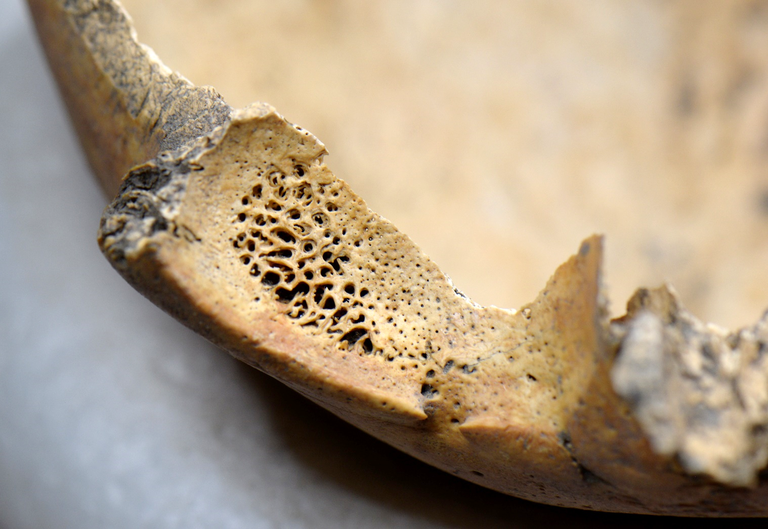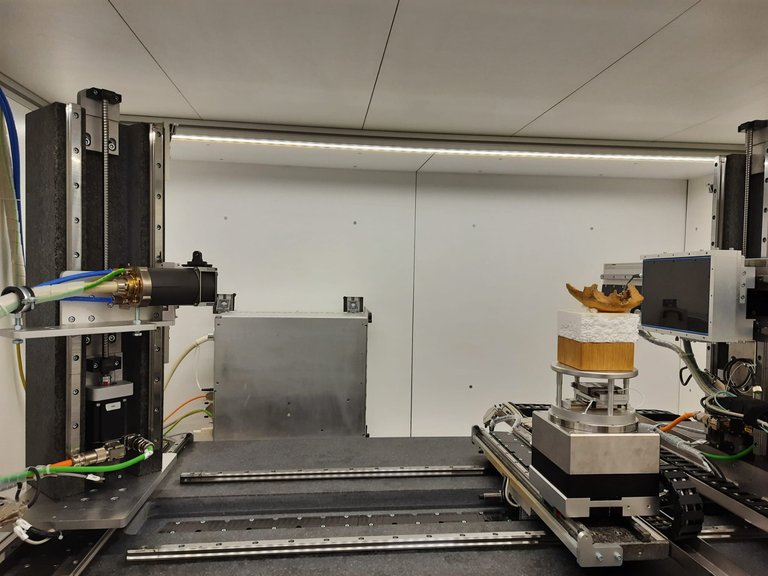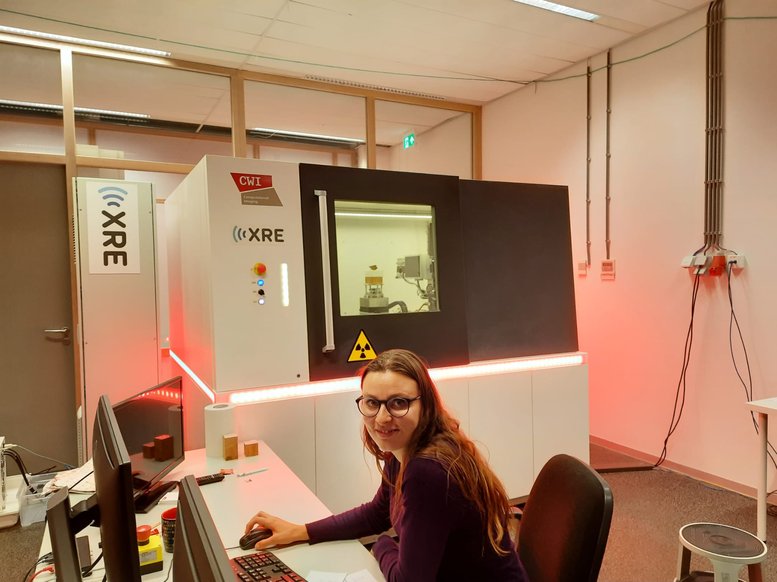Did malaria, like the plague, have a significant impact on life in the Netherlands during the Middle Ages? There are strong indicators that it did. Osteoarchaeologist Rachel Schats from Leiden University is researching thousand-year-old skeletons for traces of this severe disease, which nowadays affects large portions of the population in tropical regions.
The skeletons with signs of this disease mostly come from the water-rich western Netherlands, where there were many marshlands at the time. These were ideal conditions for mosquitoes, the carriers of the malaria parasite. These parasites enter the body through mosquito bites, where they nest in red blood cells. This causes the cells to rupture, leading to anemia.
Holes
Anemia leaves traces on the bones, particularly in the eye sockets. Holes are formed there (see photo), known as cribra orbitalia. Schats is searching for these holes to gain an understanding of the extent and distribution of malaria in the Netherlands. However, cribra orbitalia can have other causes as well. How do you determine if a skeleton actually had anemia? "With the naked eye, I can't assess that with a hundred percent certainty," says Schats. This is how the researcher ended up at CWI, where nine eye sockets were scanned in the FleX-ray Lab.



